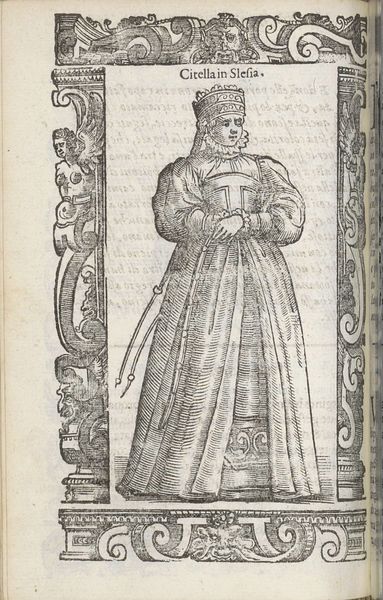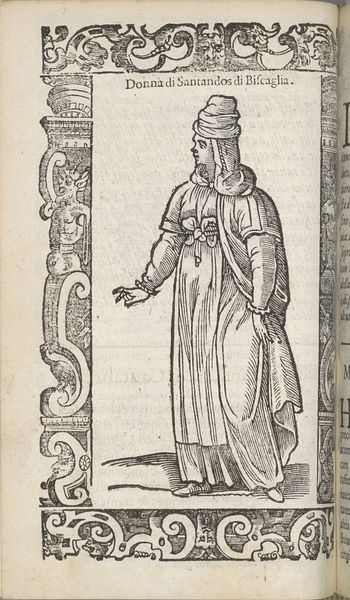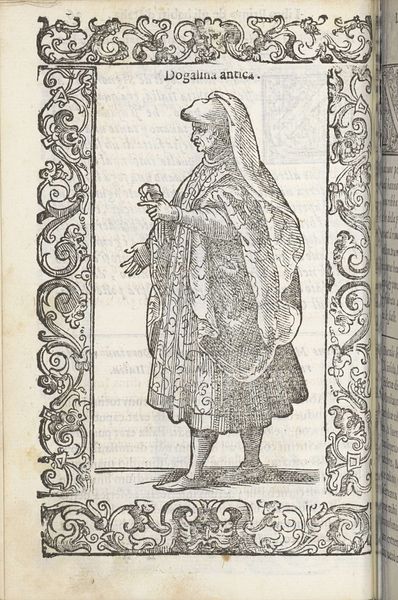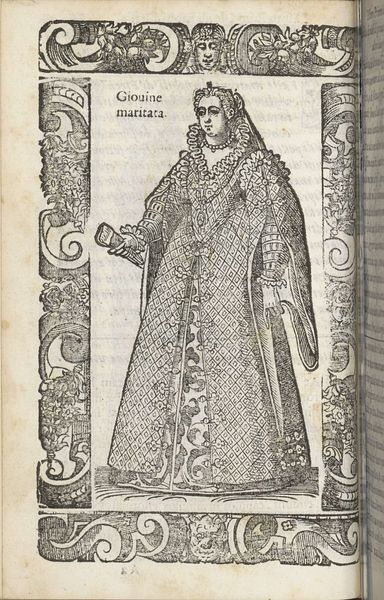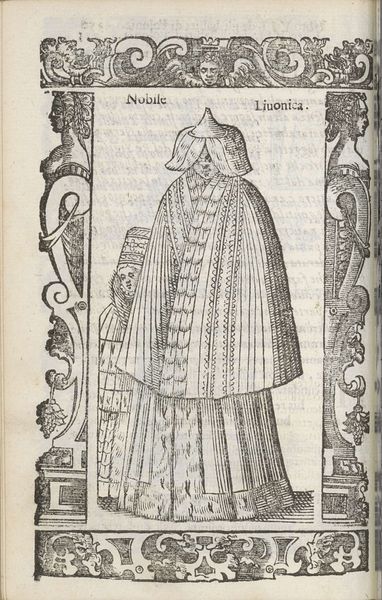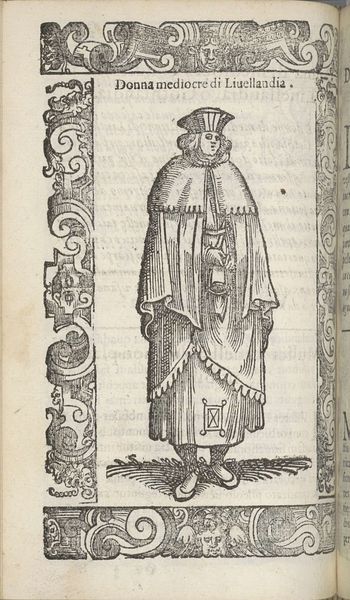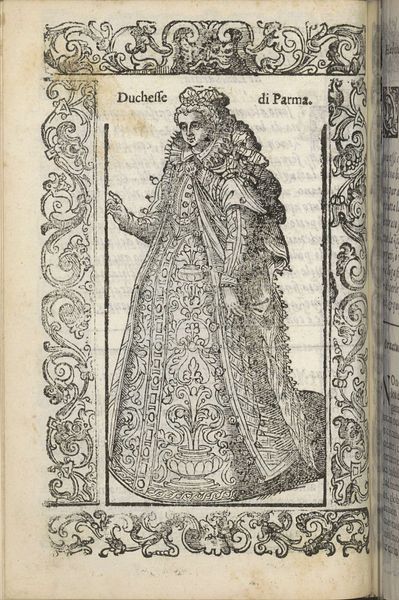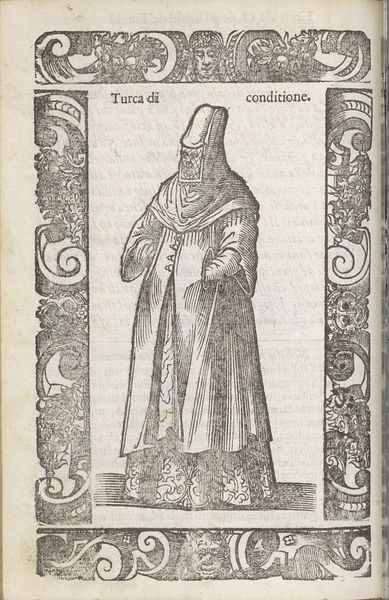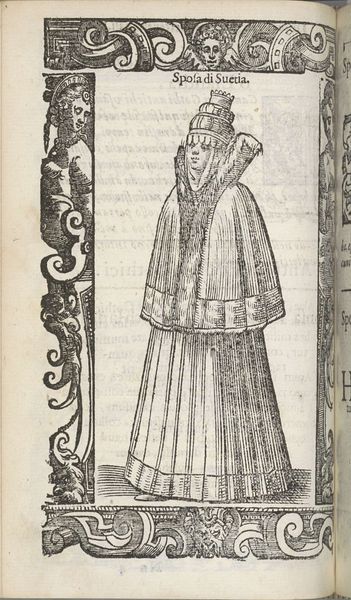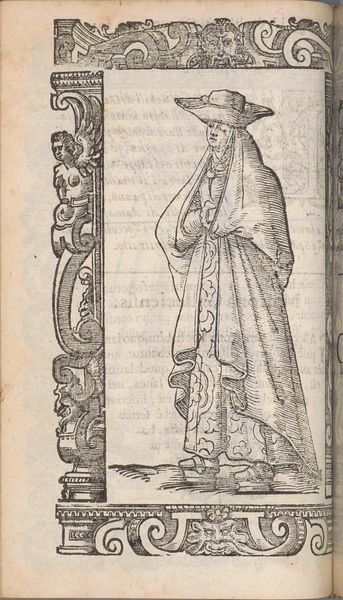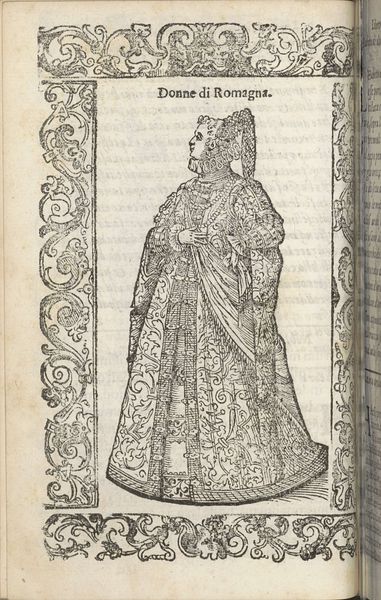
drawing, paper, ink, engraving
#
portrait
#
drawing
#
aged paper
#
toned paper
#
pen sketch
#
old engraving style
#
sketch book
#
mannerism
#
figuration
#
paper
#
personal sketchbook
#
ink
#
pen-ink sketch
#
pen work
#
sketchbook drawing
#
sketchbook art
#
engraving
Dimensions: height 167 mm, width 125 mm
Copyright: Rijks Museum: Open Domain
Editor: Here we have Christoph Krieger’s “Donna di Alfatia,” created in 1598. It seems to be an ink drawing, perhaps even an engraving. The details in the clothing and the elaborate frame are really captivating. What strikes me is the way the lines delineate texture and status; what can you tell me about that? Curator: The materiality here is critical. Look at the production of this image; it's an engraving. What does that mean in 1598? It's about dissemination, about the accessibility of images. How does this image operate within the book it inhabits? Is this "high art" or something else? Consider the labor involved, the purpose. It serves a function as reproducible information. Editor: So you’re suggesting it’s not about individual expression, but mass communication? Curator: Precisely! And communication of what? The detailed clothing isn't just decorative. It speaks to trade routes, access to materials, and even cultural appropriation or influence. Where did the textile designs originate? Who benefited from their production and distribution? Editor: I see… it's a snapshot of global exchange as reflected in this woman's garments, meticulously captured through the engraving process for wider circulation. It speaks to the intersection of artistic skill, production technologies, and socioeconomic systems of the time. Are you also saying that art helps people understand trade and material culture? Curator: Indeed! It shows the complex exchange of materials in 16th century Europe. It is vital to connect labor and commerce to the cultural expression found in drawings like this. Editor: I’ve always thought of art as purely aesthetic, but it’s clearly interwoven with industry and society. Curator: Exactly! It has opened my eyes to the integration of the materiality and socio-historical dimensions of the art-making processes.
Comments
No comments
Be the first to comment and join the conversation on the ultimate creative platform.
